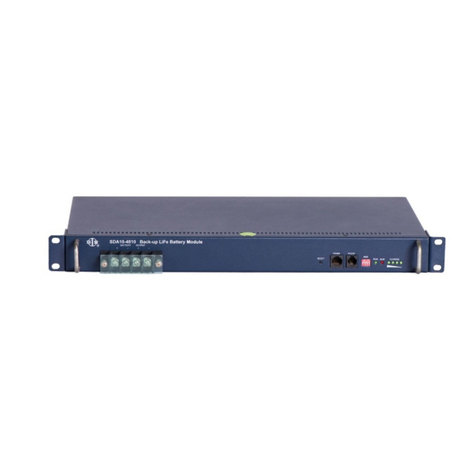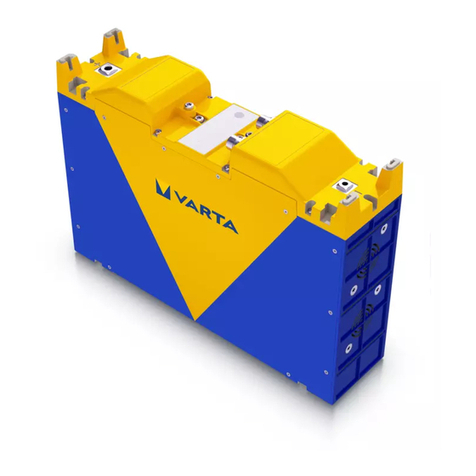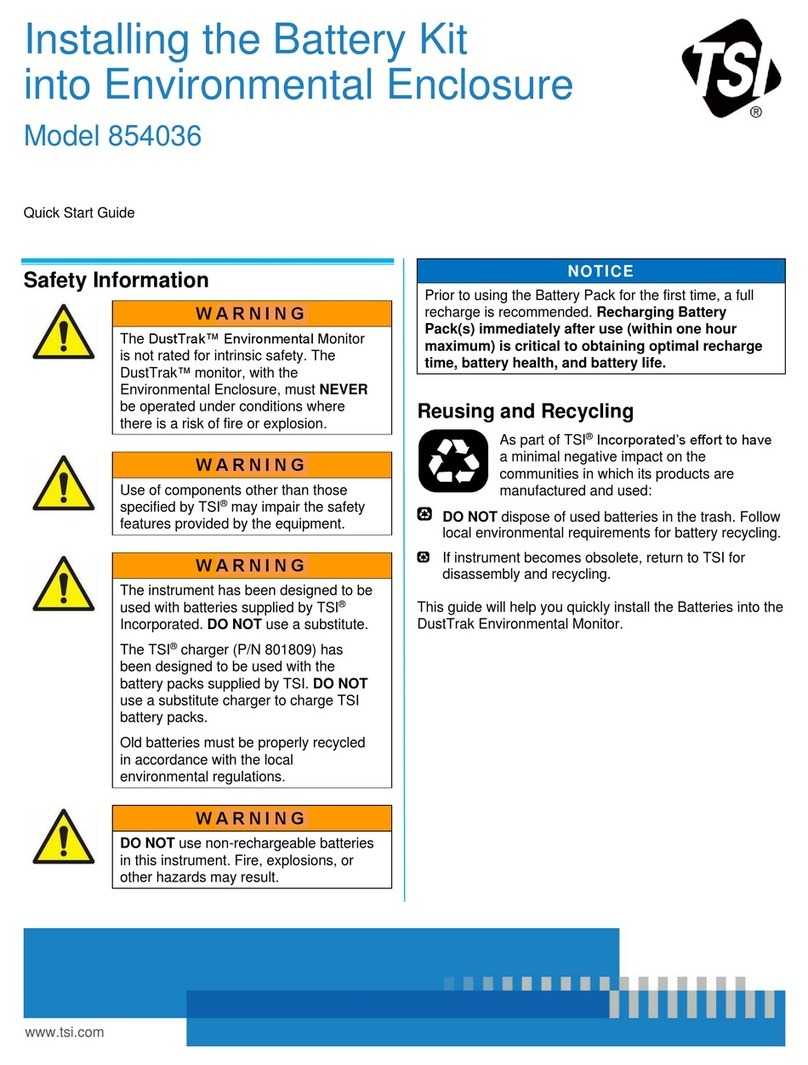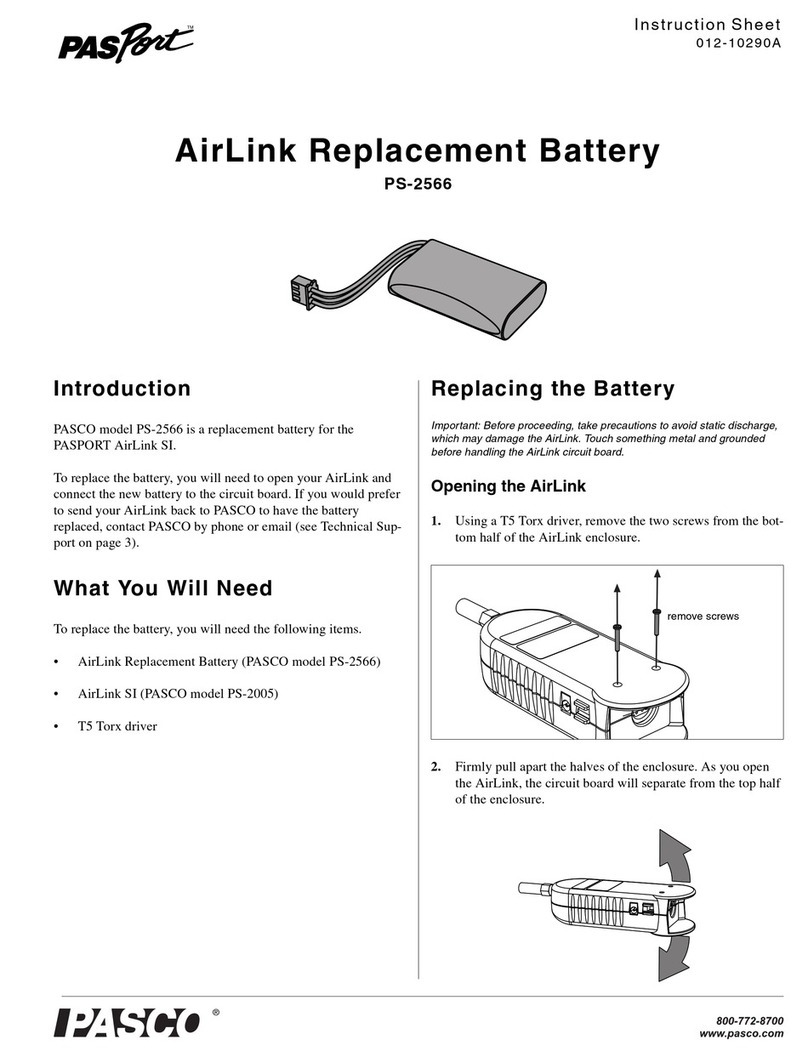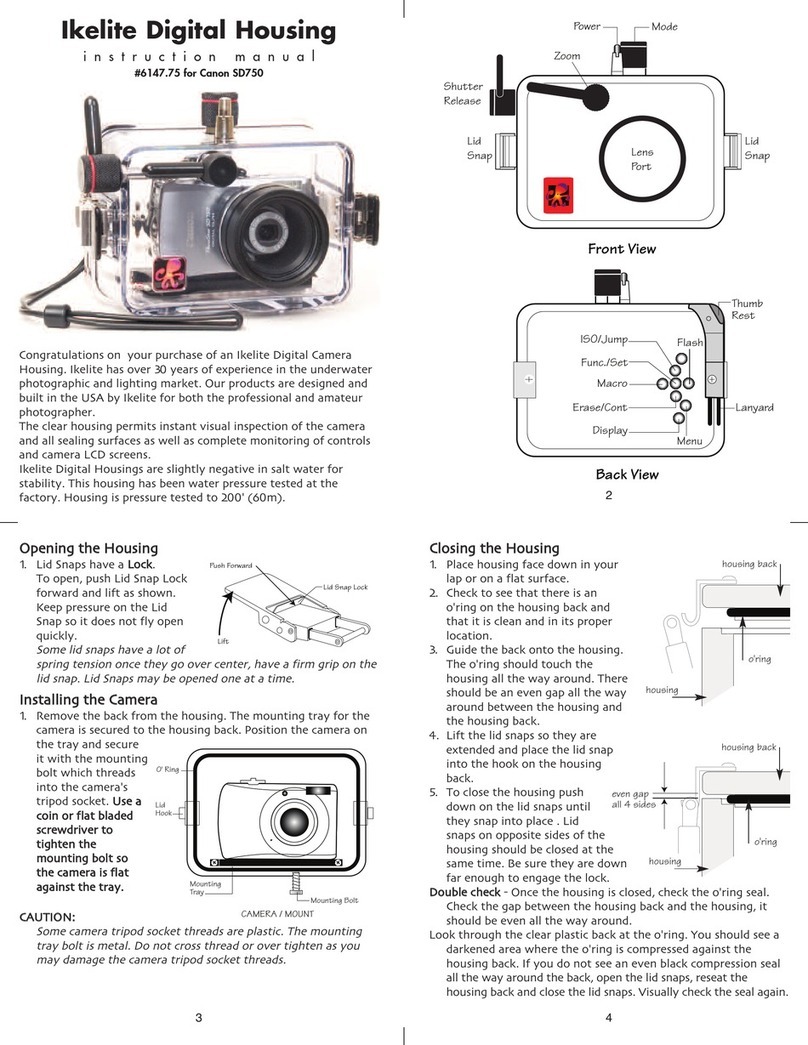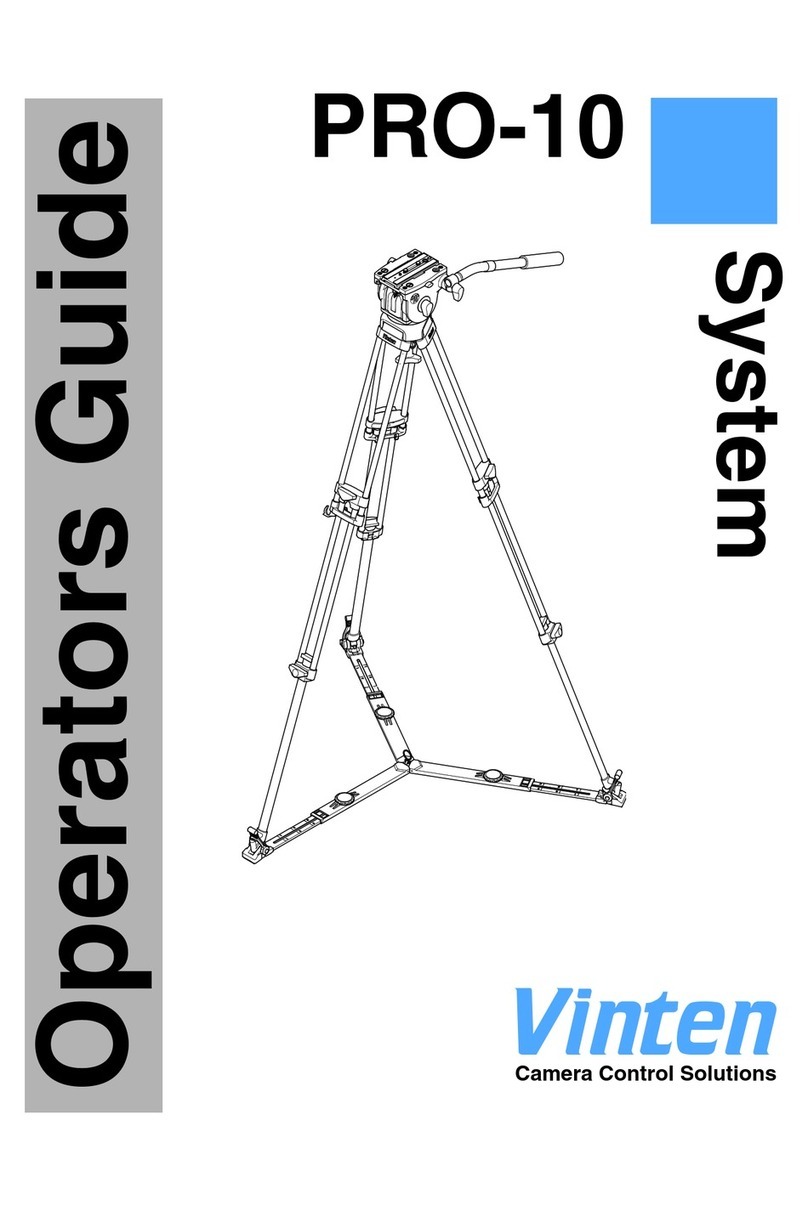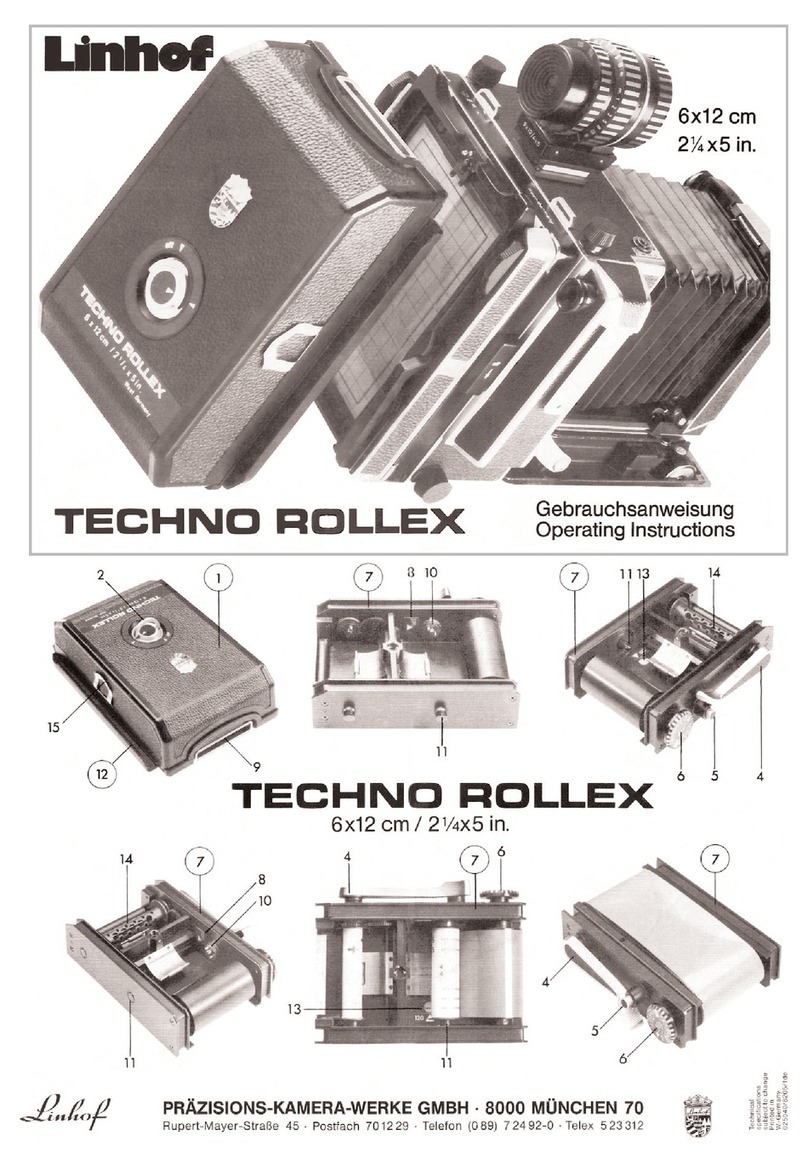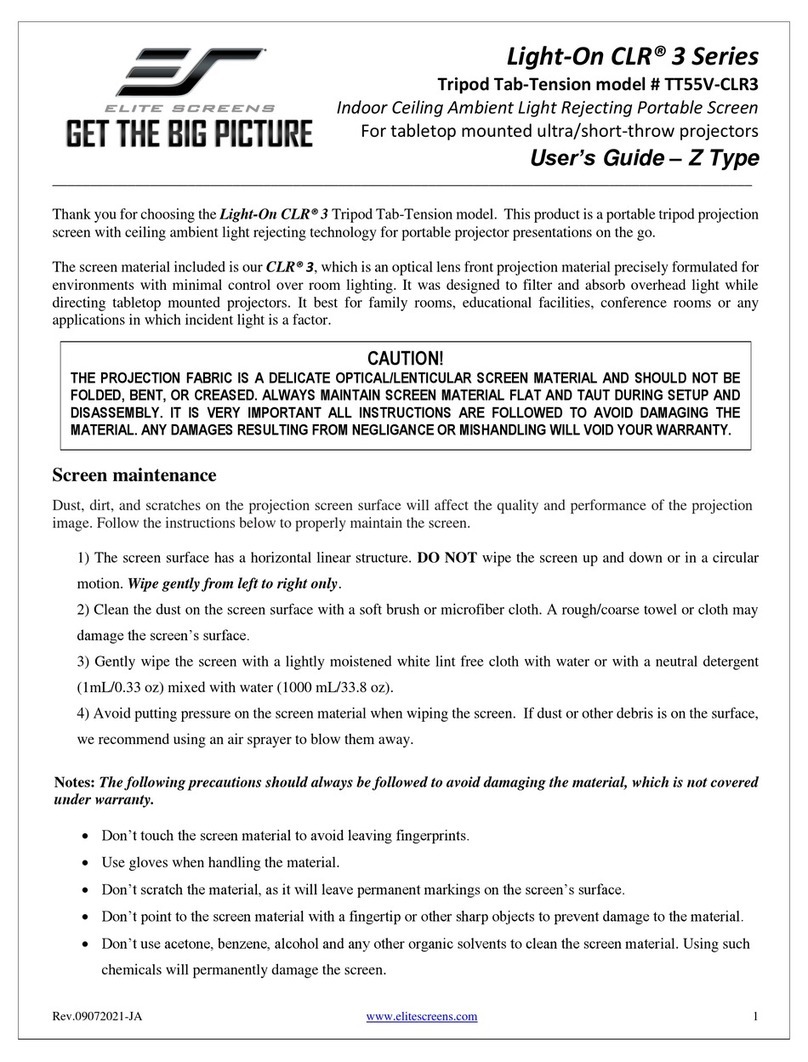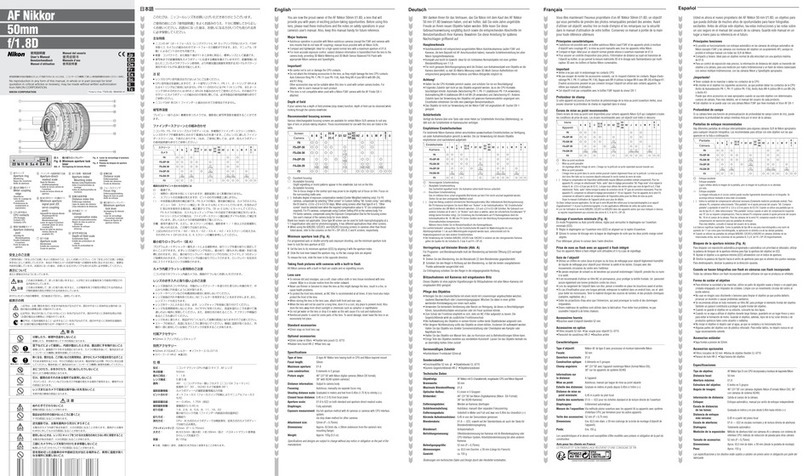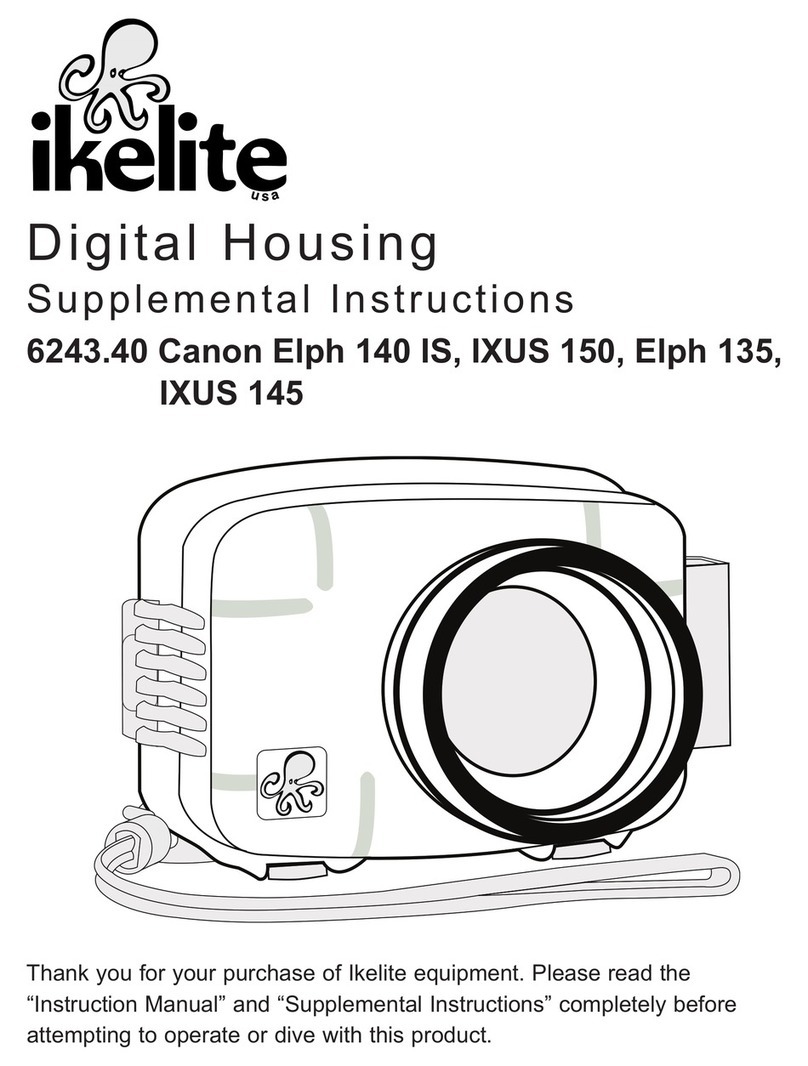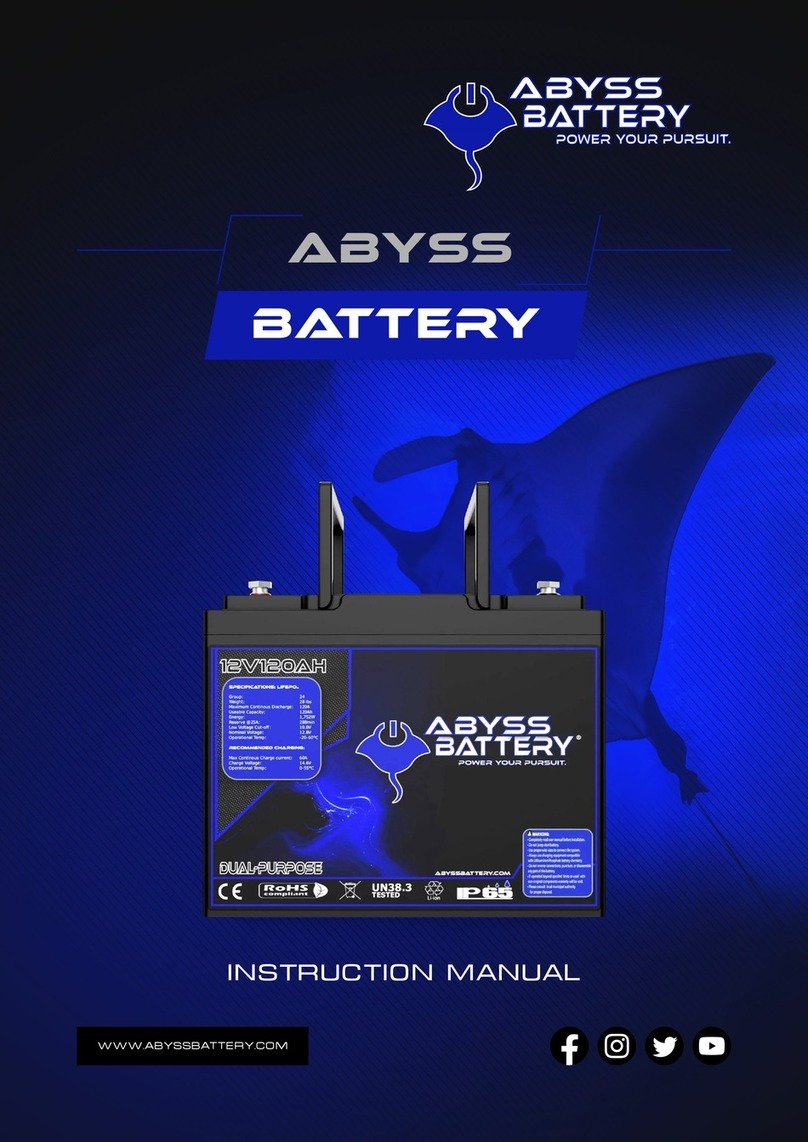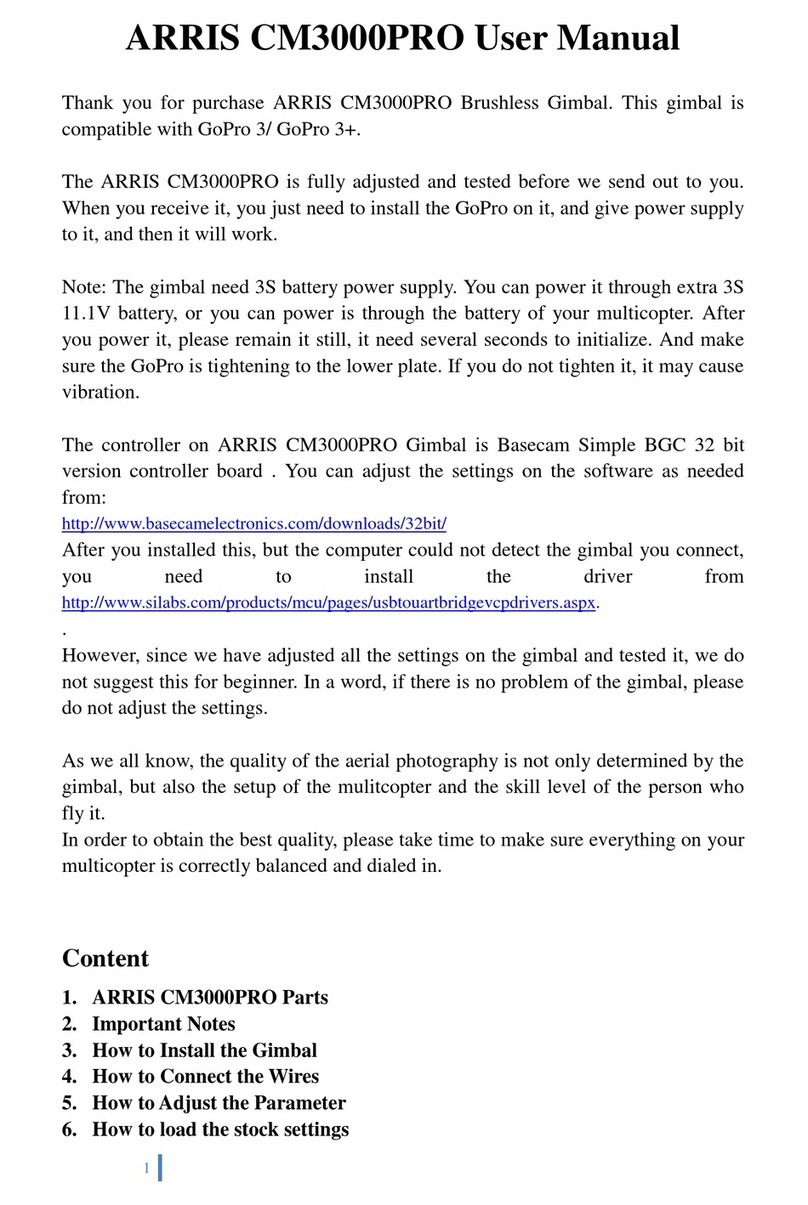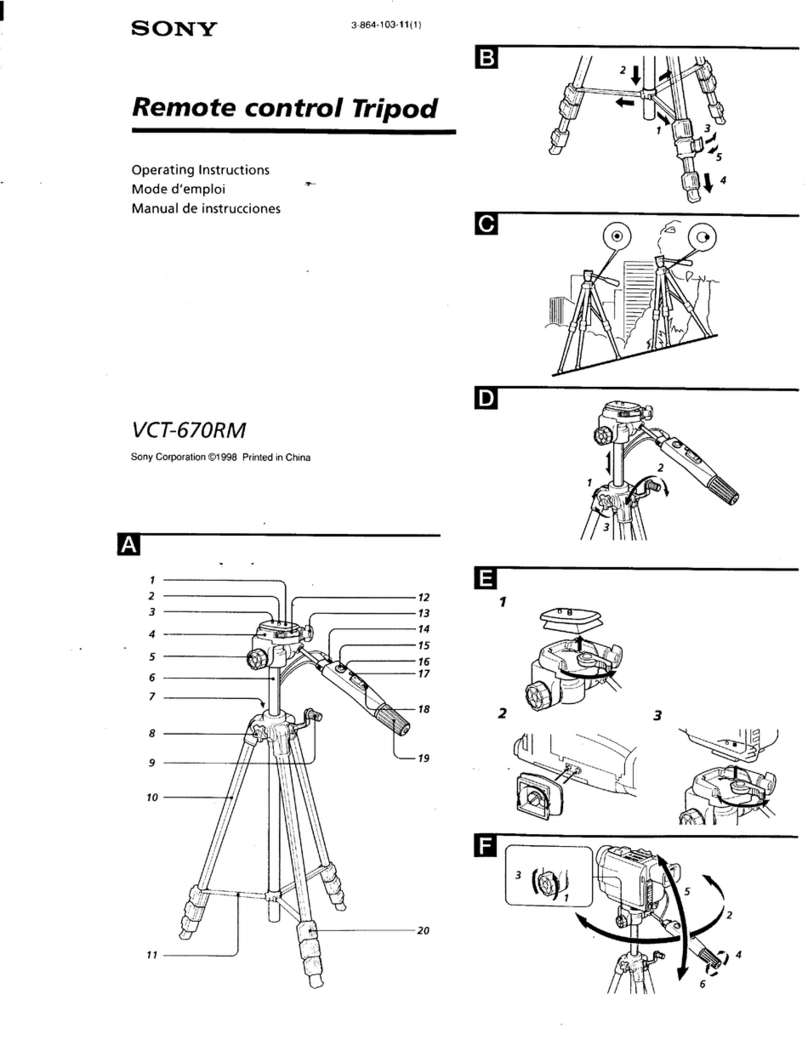SHOTO FTC Series User manual

FTC Series Front Terminal
VRLA Battery User Manual
Shuangdeng Group Co.,Ltd

Power the future
Statement
The copyright of this document only belongs to SHOTO. Any excerpt,
copyortranslation is prohibited without the written permissionof the writer.
Any pirate must be punished.
is our registered trademark. The name and trademark of the
product of China Shoto is our unique mark. Other products or companies’
names mentioned in this manual are perhaps belongs to their respective
owners. Without any prior written consent of SHOTO or the third party
trademark or the commodity name owners, this manual gives nobody any
right to use the mark appeared in this manual. This product complies with
the design requirement in environmental protection and human safety. The
storage, usage and discard of this product should be refer to the manual,
contract orrelative laws.
For the update and perfection of the product, please understand that
the information in this manual may differpartially fromthe real product.
Forthe latest information, pleasedial the market hotline.

Power the future
Foreword
ManualDescription
FTC Series Front Terminal VRLA Battery is the product of Shuangdeng Group. ” FTC Series
Front Terminal VRLA Battery User’s Manual” is the manual accompanied with the battery. Please
read the manual carefullyin advance.
Introduction
“FTC Series Front Terminal VRLA Battery User’s Manual” introduces the technical parameter,
principle, installation dimension and method, and maintenance.
Section 1 Safety introduction: containing some watchful safety proceedings during batteries’
installation, operation and maintaince.
Section 2 Summarization: containing FTC series battery model, product sampling, product
conveying and using ambient requirement, parts denomination, product specification and main
parameters.
Section 3 Usage and maintenance: containing maintenance watchful proceedings, charge
method, relationship of temperature and capacity, relationship of temperature and cycle life, capacity
checking, switch power parameters setting, using requirement under power off condition,
maintenance periods and requirements.
It is promised that:
We apply four eye-catching marks to showthe special noticed points in operating. notice,
caution, warning, danger: show the special operation precautions.

Power the future
Appendix
Chapter 1 Safety Instruction............................................................................................................1
1.1Safety Signs........................................................................................................................1
1.2 Precautions ........................................................................................................................1
Chapter 2 Summary.........................................................................................................................3
2.1 ModelIntroduction............................................................................................................3
2.2 Sampling............................................................................................................................3
2.3 Conveying .........................................................................................................................3
2.4 Storage...............................................................................................................................4
2.5 Dimension and Weight......................................................................................................4
2.6 Operation Environment and Precaution............................................................................5
2.7 Installation Instruction.......................................................................................................6
2.8 Check After Installation....................................................................................................7
Chapter 3 Operation and Maintenance............................................................................................8
3.1 Operations .........................................................................................................................8
3.1.1 Precaution................................................................................................................8
3.1.2 Battery Charging .....................................................................................................8
3.1.3 Temperature Effects the Battery Capacity...............................................................9
3.1.4 Temperature Impact on the Battery Life ...............................................................10
3.1.5 Capacity Determination.........................................................................................10
3.1.6 The Parameter Set of the Switch Power Supply ................................................... 11
3.1.7 The Application Requirements for Power SupplyInterruption Time ...................12
3.2 Maintenance Period and Requirements...........................................................................13
Operation Instruction of Battery Recharging

Power the future
1
Chapter 1 Safety Instruction
Abstract
This chapter introduces about the safety signs and the precautions. Please carefully read it
before operation to ensure safety.
1.1 SafetySigns
The safety signs indicate the safety issues that should be conformed to in installation, operation
and maintenance. The safety signs are shown as following Table1.1-1
Table1.1-1 Safety Signs and Meanings
Safety Signs
Meaning
Safety Notice
Electric Shock
1.2 Precautions
Before any operation of the equipment, please carefully read all the safety instructions in this
manual to avoid personal injury or equipment damage.
Shuangdeng Group bears no liability to the consequences incurred by violation of the general
safety operation requirement, or violation of the safety standards for designing, manufacturing and
using the equipment.
1. The battery pack has high voltage, so direct contact or indirect contact through wet objects
with any conducting cable may result in vital injury. The battery pack is energy-storing
equipment, so never short-circuit the battery pack during operation and maintenance in any
way.
2. Do not wear watch, hand chain, bracelet, ring and other conductive objects during operation.
3. Only qualified and professional personnel are allowed to install, operate and maintain the
equipment.

Power the future
2
4. Do use special tools.
Do use special tools, instead of common toolsduring electrical connections. In addition, keep
the tools in good insulation condition (e.g. wrap insulating tape around the bare metal parts)
before using them to avoid short circuit and personal injury caused by tool contact with any
live objects.
5. Using the batteries of the same model
Use batteries of the same model in the same set. Using different models in the same set will
damage the equipment.
6. Fire hazard
7. During battery installation, make sure to fix the connecting terminals of the conducting wire
tight, and keep the output terminals of the batteries clean. Otherwise, it may lead to a high
temperature of battery terminals and even to spark/fire.
8. Operation regulation
Before battery operation, read the safety precaution/instruction, and the operation
instructions, especially the battery interconnection instructions.
Substandard operation will cause danger. Prevent battery short circuit and prevent battery
electrolyte from flowing out. Overflowed electrolyte is a latent danger and it will erode the
metal object and circuit board, thus damaging the equipment and causing short circuit of the
circuit board.
9. The Operation Environment
The batteryshould be kept far away from fire, organic solution; avoid direct sunshine and the
temperature should be the same of the same set.

Power the future
3
Chapter 2 Summary
Abstract
This chapter mainly introduce FTC series battery’s model, product sampling, product conveying
and using ambient requirement, parts denomination, product specification and main parameters。
2.1 ModelIntroduction
FTC series valve-regulated lead-acid battery (following called FTC battery for short) belong to
SHUANGDENG GROUP’s second battery products, producing license size: QS:XK06-006-01178.
FTC battery is 6 cells structure,rated voltage per unit is 12V. Take FTC-100 for example, its mean as
fig.2.1-1 showing.
In the fig.2.1-1,”6” means six cells, “FTC” means Front Terminal valve-regulated lead-acid battery,
the figure presents battery’s rated capacity.
FTC–100
Fig.2.1-1 FTC-100 batterytype and description
2.2 Sampling
Choosing batteries should consider use frequency, discharge current, discharge time and so on.
The capacity should be a bit larger to prevent battery from damage caused by over-discharge or
larger current discharge.
2.3 Conveying
Terminal protection is well done, the coping of the battery can not suffer the pressure, and short
circuit is prohibited when batteries are conveyed. Batteries should lie down at the time of transporting
Front terminal
valve-regulated lead-acid
battery
Rated capacity C10
Unit: Ah

Power the future
4
and can not set upside down, roll, throw, bump, insolate or drench during conveying.
2.4 Storage
1. Batteries can be stored in the environment of 0-35°C before installation. The storage time is
usually 3-6months. Batteries should be charged if the storage time exceeds 6 months.
2. Batteries should be kept in the dry, clean and ventilated environment. They can not be kept in the
environment of radiation, organic solvent and corrosive gas. They should be kept away from fire
and avoid sun irradiation.
3. Batteries should lie down and batteries without package box can not be overlapped.
2.5 DimensionandWeight
Table2.5-1 Battery parameters
Type
Rated voltage
(V)
Rated capacity
(Ah)
Outer sizes
(L×W×H)mm
Reference
weight
(kg)
FTC-100
12
100
400×110×286
35.5
FTC-150
12
150
552×125×310
56
FTC-170
12
170
552×125×310
58
Type
Terminal structure
FTC-100
FTC-150
FTC-170
Fig.2.5-1 FTCseries battery terminal structure

Power the future
5
2.6 Operation EnvironmentandPrecaution
1. The battery servicing surroundings should be dry, clean and airy, without large quantity of
irradiation, infrared rayradiation, organic solvents and corrosive gas, and avoided the direct sun
shining. The battery is recommended to use temperature range of 15 °C ~ 35 °C .
2. The ventilation hole of the heater or air-conditioner should not directly face the battery, and the
temperature difference of the each part of the battery should not be higher than 3°C , and using
the infrared ray thermometer to determine the each part temperature of the battery is suggested.
3. The battery can be installed with the battery cabinet or shelf provided by the manufacturer. If the
battery is installed in the storied buildings, the load requirements should be inquired from the
construction department. The earthquake-preventing supporting shelf which is fixed with ground
foot bolt should be designed in order to diffuse the stress in the district whose anti-earthquake
intensity is more than 7 degree.
4. In order to avoid increasing the circuitry voltage decrease, the battery modules should be near
the load, and the cables, copper terminals and connecting wires selected should be suitable.
When the batteries are used by the way of parallel-connection, the circuitry voltage decrease
should be same to some extent to the best of one's best ability, and the fuses should also be
equipped in every battery module.
5. The total voltage of the battery modules is comparatively higher, i.e., the danger of electric shock
exists. Therefore, the insulation tools should be used and the protection gloves should be put on
when installing or removing the cable, copper terminals and connection wires etc.
6. Dirty contact or loosened connection will possibly lead to the temperature increase in the part of
the battery terminal, then spark will be produced, which will probably result in fire. Thus, the
cable, copper terminals, connection wires, and the battery terminals should be kept clean and
the connection should be fastened during the installation of the battery. Single battery should be
serially connected with stainless steel bolt, copper terminals (connection wires and cables)
electrodeposited with tin, and flat gasket. And the bolt must be fastened (Wring moment is
9~11N·m).
7. After the installation, carefully examine the total voltage, open circuitvoltage per cell, the polarity.

Power the future
6
Check to see if the supervising parameters in the switch power monitor unit consist with the
operation and maintenance manual (float charge voltage, equalization charge voltage,
equalization charging time and period, charge current limit, equalization charge current turned to
float charge, float charge current turned to equalization charge current, temperature
compensation value, the recovery voltage of the battery and so on.).
8. Check to see if the switch power has equipped with the temperature sensor, which should be
installed in the center of the big side of the battery.
9. Check the bolts and connection in order to confirm the connection between batteries isreliable.
10. The circuit switch should be disconnected, and the correctness mentioned in item has been
confirmed (it should be empathized that the positive terminals of the battery should be connected
with the positive counterpart of the charger, and negative to negative) before the battery system
is connected with the charger or load.
2.7 InstallationInstruction
Fig.2.7.1 FTC series installation instruction
-:Negative Electrode
+:PositiveElectrode

Power the future
7
2.8 CheckAfter Installation
After installation, check carefully and keep record, see Table 2.8-1 for the main items.
Table 2.8-1 The main items needed to be checked after installation
No.
Items
Results
1
The polarities are in right connection, the voltage of the battery
group between positive and negative output terminals are higher
than 48V
□Y □N
2
The voltage of each cell in the same battery group is between
12.80 and 13.50V.
□Y □N
3
If several battery groups are parallel connection, each output
positive terminals should be connected together and negative
terminals together.
□Y □N
4
The positive and negative output terminals of the battery group
should be connected with the counterparts of the charge device.
□Y □N
5
All of the bolts, nuts and screws are fastened tightly.
□Y □N
6
The rack has no deformation after installation, and its vertical
obliquity should be less than 5°.
□Y □N
7
No unnecessary connecting wires or tools etc. are left on the
batteries or racks.
□Y □N
8
The appearances of the batteries have no cracks or damages.
□Y □N
9
The ambient site of the batteries and rack is clean.
□Y □N
10
All of the parameters of the battery group, such as the
equalization charge and float charge currents, have been set
correctly.
□Y □N
11
The resistances between output terminals and the rack are
normal.
□Y □N
12
Other items need to be checked.
□Y □N
13
□Y □N
14
□Y □N
15
□Y □N
16
□Y □N
17
□Y □N
18
□Y □N

Power the future
8
Chapter 3 Operation and Maintenance
Abstract
Operation and maintenance,containing battery maintenance and precaution, charge method,
relationship of temperature and capacity, relationship of temperature and cycle life, capacity
checking, switch power parameters setting, usage requirement under power-off condition,
maintenance periods and requirement.
This chapter introducesbout the operation and maintenance of FTC battery.
3.1 Operations
3.1.1 Precaution
1. Never short circuit the battery.
2. Charge before operation after long period storage.
3. Keep the battery clean.
4. Equalized charge the battery for long storage.
5. After emergencydischarge, no continuous power supply without in time equalized charge.
6. Never parallel the battery of different capacity.
7. No burning feel when touch the battery terminalor the connecting part.
3.1.2 Battery Charging
3.1.2.1 Float Charging
The float charging voltage of the battery is set as 13.38V/unit (the mean value calculated from all
of the battery voltages at 35°C), the maximum charging current is set as 0.20C10A.The float and
balancing charging voltages should be correspondingly modified if the battery working environment
temperature exceeds the range of 35°C , and the modification voltage is Vmodification =V35°C -
0.018/°C ×(Tactual-35°C ), i.e., if the temperature increases by 1°C , then the float charging voltage
should decrease by 18mV/unit; and if the temperature decreases by 1°C , then the float charging
voltage should increase by 18mV/unit.

Power the future
9
3.1.2.2 Balancing Charging
Balancing charging voltage is usually set as 14.10V/unit (the mean value calculated from all of
the battery voltages at 35°C), and the maximum charging current is set as 0.2C10A, according to
setting table to set Balancing charging time.
Table3.1-1 Balancing charging parameters
Balancing charging condition
Balancing
charging time.
Conditions to exit the
balancing charging
1
Before operation and after installation and
debug of the battery
1h~10h ,The
idiographic time
according to the
condition of
exiting Balancing
charge
When the pile’s equalize
charge current lower
than 10mA/Ah, it
switches to float charge
automatically(for parallel
≤10mA/Ah×pieces)
2
The charge current after power off≥50mA/Ah
(for parallel≥50mA/Ah×pieces)
3
Balancing charge starts after battery capacity
checking
4
Balancing charge should start when the float
voltage lower than 13.10V/unit during the using
process
10h
When the balancing
charge time arrive 10h, it
switches to float charge
5
For net battery, it should execute periodic
balancing charge one time six months
commonly
3.1.3 Temperature Effects the Battery Capacity
Temperature effects the battery capacity. Usually, the higher the temperature, the larger the
discharge capacity. During discharging time, if the temperature isn’t 25°C , it needs to convert the
measured capacity C t to 25°C benchmark capacity C25 according to the following formula.
1+K(t-25)
Ct
C25
In the formula: t is the discharging ambient temperature, K is temperature coefficient. In the 10hr
capacity experiment, K=0.006/°C and 3hr capacity experiment, K=0.008/°C, 1hr capacity experiment,
K=0.01/°C .
Float charge characteristic: Float charge voltage should choose the manufactory
recommendatory voltage value. And the float charge voltage value should make correspond

Power the future
10
adjustment according to the ambient temperature. When the switch power have temperature
equalization function, but have no sensor or no temperature auto-equalization function, VRLAbattery
float charge voltage with different temperature should make correspond adjustment according to the
following table.
Table3.1-2 Float charge voltage under different ambient temperature
Ambient temperature(°C )
Float charge voltage(about
V±0.01V/unit)
0~10
13.68
11~15
13.56
16~25
13.44
26~35
13.38
36~40
13.32
3.1.4 Temperature Impact on the Battery Life
The battery is recommended to use temperature range of 15°C ~ 35°C and has the longest
service life and the best performance if the environment temperature is kept at 25°C~35°C. When the
temperature is at the range of 15°C ~ 25°C, the charging efficiency and performance of the batteries
will slightly decrease. And if the temperature is lower than 15°Cor higher than 35°C, the service life of
the batteries will be shortened. The reference data are listed below:
Table3.1-3 Effect of temperature on the battery service life
Battery mean
temperature
Service life
decreasing rate (%)
(25~35)°C
0
40°C
30
45°C
50
50°C
75
3.1.5 Capacity Determination
Balancing charging should be done before capacity determination. After balancing charging
changes into float charging, float charging current will be between 1~2 mA/Ah, and if the float
charging current is stable for about 2~3hours, itshows that the battery system has been fully charged.
The capacity determination can be carried out only after confirming that float charging has been

Power the future
11
continued for about 24h, then charging has been stopped for 1h.
Table3.1-4 Capacity examination method
Discharge rate
Discharge
current, A
Discharge single battery final
voltage,V
Capacity determination
standard
10h
1.0I10
10.80
≥1.00C10
5h
1.6I10
10.80
≥0.80C10
3h
2.5I10
10.80
≥0.75C10
1h
5.5 I10
10.50
≥0.55C10
3.1.6 The Parameter Set of the Switch Power Supply
The controlparametersof the switch power supply to the batteries should be set according to the
value of the load current. The parametersnormallyset are listed in Table.
Table3.1-5
The ratio of
load current
and I10
Stop the work of programmed exchange
machine, the final discharge voltage of
the single battery,( V)(the first
discharge-stopping)
Stop the work of signal exchange
transition,the final discharge voltage of
the single battery,(V)
(the first discharge-stopping)
6/6
11.40(45.6V/48V system)
11.28(45.0V/48V system)
5/6
11.70(46.8V/48V system)
11.58(46.3V/48V system)
2/3
11.76(47.0V/48V system)
11.64(46.5V/48V system)
1/2
11.82(47.3V/48V system)
11.70(46.8V/48V system)
1/3
11.88(47.5V/48V system)
11.76(47.0V/48V system)
1/6
11.88(47.5V/48V system)
11.76(47.0V/48V system)
Note:
1. I10 means 10-hour rate discharge current in Table 6, its value is one-tenth of C10 which is the
rated capacity of the battery. If the batteries are parallel connected, then C10, the rated capacity
is the sum of the rated capacity of all of the individual battery paralleled (Batteries which have
different rated capacities can not be parallel-connected).
2. If bad battery whose finaldischarge voltage is below 10.80V when discharging itwith I10 after 5
hours occurs in the battery system, the very bad battery should be displaced with a good one
or restore its capacity as soon as possible.
3. The parameters listed in Table 6 and 7 are only suitable for the situation that the discharge

Power the future
12
current is less than 0.1C10.
Table3.1-6 Switch power parameters setting
Item
Parameter
Float charging voltage
13.38V/unit
Equalized charging voltage
14.10V/unit
Charge current limiting
0.20C10A
Upper voltage alarm threshold
57V(14.25V/ unit)
Lower voltage alarm threshold
45V(11.25V/unit)
Temperature compensation coefficient of
battery
-18mV/unit·°C
Battery over temperature
40°C
LVDS Deviation Voltage
44V
LVDS Reposition Voltage
47V
48V series pile replacement working voltage
48V(avoiding battery deep discharge resulted by
the voltage rebound time after time and continue
work after arriving the working voltage)
Equalized charge period
6 months usually for batteries in equipment room
Periodical equalized charge time
10h
Precondition of float charge switching to
equalized charge
≥50mA/Ah
Equalized charge time with power cut
1~10h
Precondition to exit equalized charge
≤10mA/Ah
Capacity setting for battery diffluence
According to battery capacity
Batteries connection
Serial first, parallel next
Voltage difference between individual
batteries
50 mV for working mode
20 mV for open circuitmode
3.1.7 The Application Requirements for Power Supply Interruption Time
1. Under the situation that the battery system has not been recharged after accident discharge,
and just at the very time, the power supply of the communication station stops, often the
battery system can not be used to supply the power further. If continue working, it could lead
the battery life shorter because of the battery deep discharge

Power the future
13
2. If the accumulative discharge capacity reaches 50%~80% of the battery rated capacity for one
power supply interruption, the float charging time can not be less than 48h after balancing
charging changes into float charging. If the accumulative discharge capacity is less than 50%
of the battery rated capacity for several power supply interruption in one day, the float
charging time can not be less than 24h after balancing charging changes into float charging.
3. As far as the communication station, which has very good power supply conditions, is
concerned, protective C10 capacity discharge should be done every 6 months (depth of
discharge is 50%), and the battery system should be recharged in time.
4. Auxiliary power supply equipment, such as Oil Power Generator etc, should be equipped for
those communication stations in which frequent power interruption exists and the power
interruption time is very long. If discharge depth of the battery system is above 80%, and the
public power supply has not restore yet, Oil Power Generator should be used to supply power
to the communication station equipments and recharge the battery at the same time.
3.2 MaintenancePeriodandRequirements
1. The newly installed battery system should be checked in the following aspects when it is put
into use --- whether or not the terminal voltage of every battery is normal, charging and
discharging current are stable, fastening parts are loose, connecting parts and the battery
terminals are being heated up by touch during charge and discharge.
2. Individual battery terminal voltage should be determined every 3 months to judge their
evenness, good record should be done at the same time.
3. The maintenance person should periodically check that whether or not connection bars are
loose or move, single battery is damaged and leaks, vent valve normally vents gas, battery is
dry etc. And in site maintenance should be done if problem occurs, and manufacturer should
be contacted to settle the problem if in site maintenance is very difficult.
4. The maintenance person should periodically determine the battery float charging voltage, and
check that whether or not there is individual battery which has very high or lowfloat charging
voltage.
5. Check that whether or not there is difference between the total system voltage and the voltage

Power the future
14
displayof the Switch Power Supply. If difference exists, it should be rectified.
6. Check that whether or not there is difference between the total system voltage and the sum of
all of the individual battery. If difference exists, the reason should be checked out and then the
difference should be corrected.
7. Record the relative electricity interruption and charging parameters in the Switch Power
Supply internal memory, and if necessary, it is strongly suggested that the battery system be
fully recharged.

Power the future
1
Operation Instruction of Battery Recharging
Jiangsu Shuangdeng Group Co.,Ltd

Power the future
2
Appendix
1 Application Range........................................................................................................................1
2 Battery Recharging Requirement.................................................................................................1
3 Battery Recharging Method .........................................................................................................2
3.1 Recharging Parameter............................................................................................................2
3.2 Recharging Procedure............................................................................................................2
3.3 Cycle Procedure.....................................................................................................................3
3.4 Battery Capacity Test Method ...............................................................................................3
4 Charging Equipment and Tools....................................................................................................4
5 Attention Proceedings ..................................................................................................................4
This manual suits for next models
3
Table of contents
Other SHOTO Camera Accessories manuals
